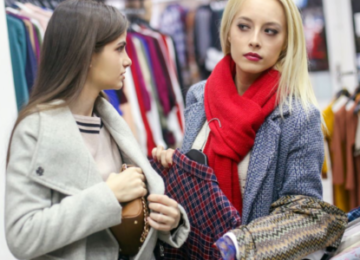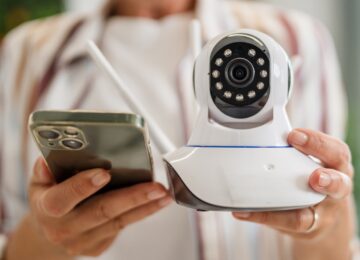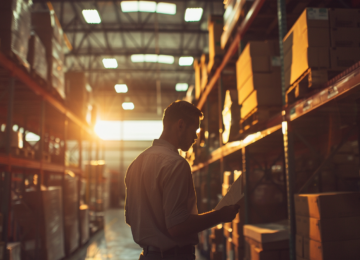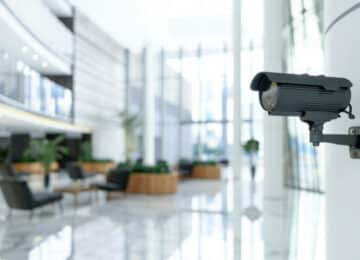What is the use of Machine Learning in video surveillance?

Artificial intelligence is now part of our daily lives, with our use of conversational agents, handwriting predictions in our email inboxes or word-processing software, facial recognition to unlock our devices and recommendations made by online shops, social networks, music applications, GPS, etc. Professionals have also understood the value of this tool and are using it in a wide range of applications: personalised learning in education, predictive analysis of customer behaviour in marketing, targeting of advertising, optimisation of journeys in logistics or even detection of suspicious gestures in security.
It's this last application that interests us insofar as it improves the work of retailers who want to combat shoplifting effectively. How is this made possible? Mainly thanks to Machine Learning. But what does this learning technique mean and how has it revolutionised the security sector? That's what you'll learn in this article.
What is the purpose of Machine Learning?
Machine Learning belongs to the field ofartificial intelligence (AI). The concept is as follows: programming a computer system to perform a specific task is too complex and time-consuming. As a result, it needs to be taught to learn so that it can adapt to situations that are different from its own.
Machine Learning approaches
To do this, a set of qualitative data is provided to the machine by experts in the field. There are several approaches:
- Supervised Machine Learning, which creates its own model using classification algorithms parameterised by humans. The latter assign labels to the examples provided in order to make a prediction.
- Unsupervised Machine Learning does not rely on labelling. It groups the training data itself into clusters based on the characteristics it manages to highlight.
The difference with Deep Learning
In order to solve more complex problems more efficiently, a sub-category of Machine Learning has developed in recent years: Deep Learning. How does it differ from machine learning? The amount of data is much greater. In addition, it is inspired by the human brain, mainly neurons: an artificial neural network is set up and these are grouped into several layers, each of which refines the processing of the data.
In addition, these neural networks are convolutional, meaning that they are capable of filtering data, particularly visual and vocal data, in order to recognise the elements to be analysed.
Deep Learning is very useful and powerful, but it requires a large volume of data and therefore a large storage capacity, as well as a lot of computing and energy resources.
What are the advantages of Machine Learning in video surveillance?
The video surveillance sector has taken advantage of the technological advances linked to Machine Learning and continues to follow all developments closely in order to meet the needs of retail security managers.
The uses of Machine Learning in the retail sector
With shoplifting on the increase , retailers have very high expectations of video surveillance. What solutions can Machine Learning bring to their problems?
- Alerting retailers to suspicious behaviour. When analysing the data from the cameras, if the AI considers that a gesture is suspicious, it sends a video to the tablet, computer or smartphone of the security guard. The retailer can then provide assistance to the customer to dissuade them from committing the theft, or spot them to remove any doubts when they leave the shop.
- Detecting other problems. Artificial intelligence can also be trained to warn shopkeepers in the event of a fall, illness or assault, so that they can react quickly to protect people. The same applies to damaged goods.
- Machine Learning is also used to predict customer behaviour, in particular by continuing to learn from the videos it studies. As a result, stocks can be better managed and marketing departments can optimise their communication campaigns.
How Veesion's AI works
At Veesion, we use Machine Learning in the following ways:
- Motion detection. The machine is trained on large datasets to spot typical gestures that look suspicious on images produced by surveillance cameras.
- Object identification. Finally, Machine Learning is required to recognise backpacks, shopping trolleys, pushchairs, etc., but also what belongs in the shop (shelves and items).
Gestures and objects are then linked together: if an object identified as an item follows the movement of a body part and ends up in another object such as a motorbike helmet, an alert is triggered, as this corresponds to a suspicious gesture.
Other elements, including Deep Learning, complement this solution to improve recognition and reduce false alarms.
Limits to the use of Machine Learning in video surveillance
The use of AI in shops and in the workplace is strictly regulated by law. AI, and therefore Machine Learning, must only be used for product security and surveillance. Under no circumstances should it be used to monitor employees or for visual, voice or biometric recognition to identify individuals.
Our Veesion solutions are designed with these best practices in mind. They comply with the RGPD (General Data Protection Regulation) and the French Internal Security Code.
Ultimately, Machine Learning is a type of artificial intelligence that designs computer systems capable of learning on their own. Thanks to this automatic learning, video surveillance systems offer retailers the possibility of spotting suspicious gestures without constantly being behind their computer. Finally, Machine Learning gives everyone the opportunity to benefit from protection against theft, even shops that don't have the financial resources to recruit an agent. By choosing the Veesion solution, you can benefit from all these advantages, with a reduction in losses of up to 60%, while being sure of complying with the rules of the legal framework.
The most popular
Related news
Discover what Veesion can do for you. Do you have one or more stores?
Our team will contact you within 48 hours





